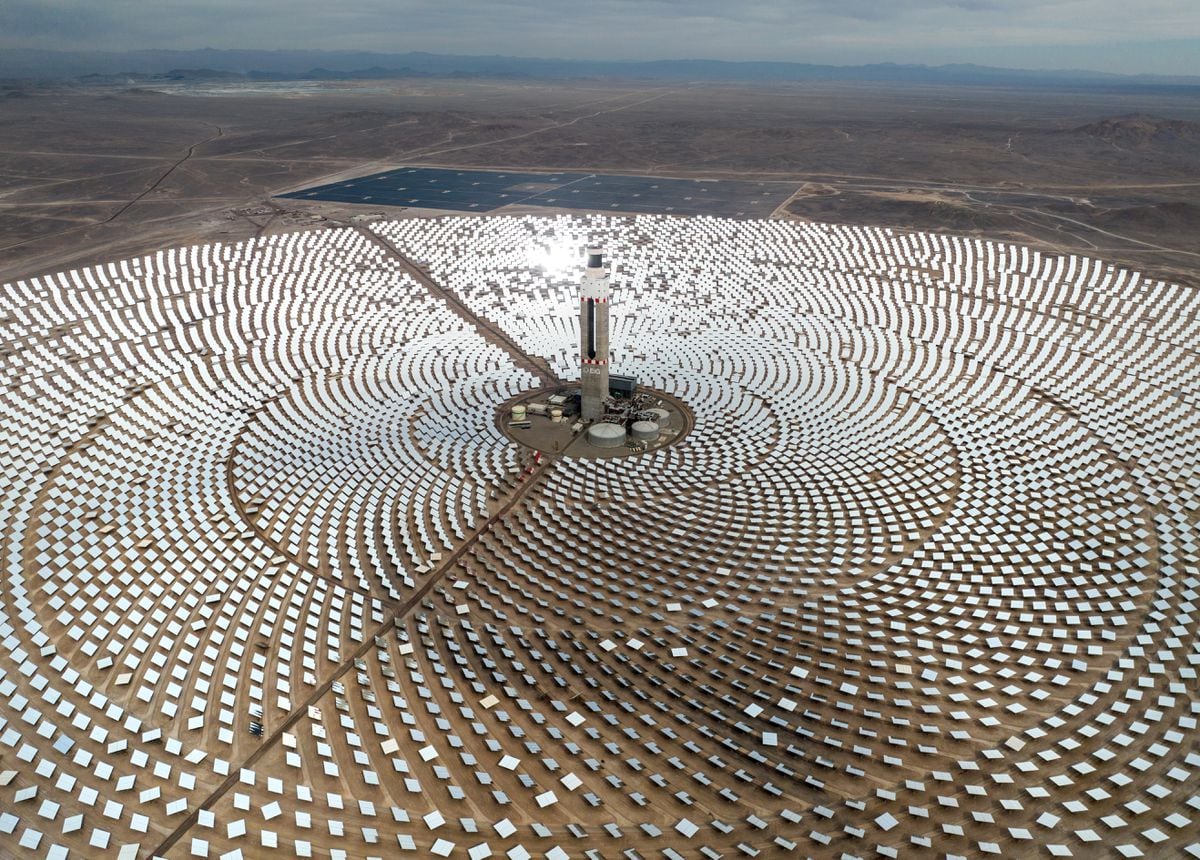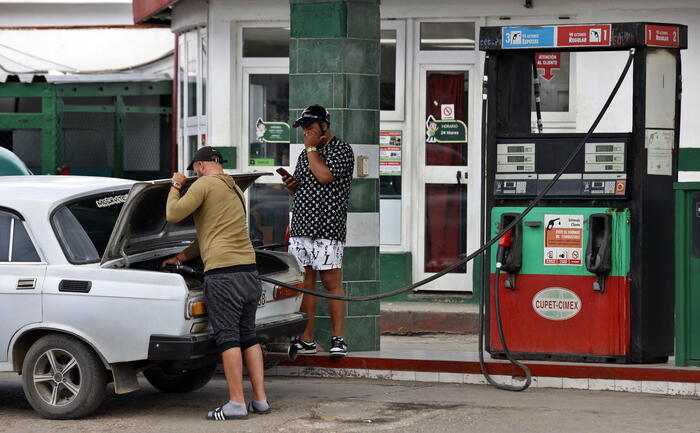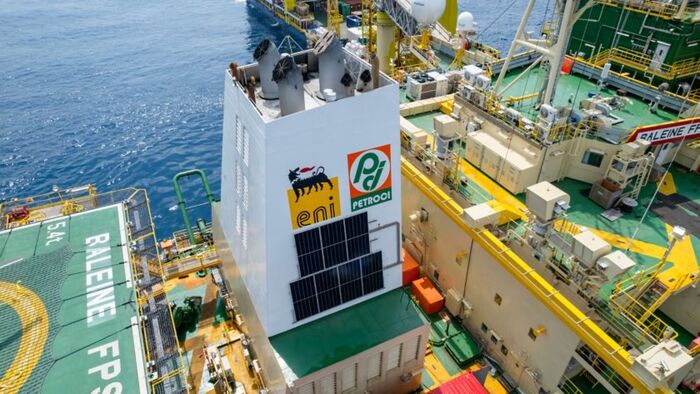The Cerro Dominador concentrated solar power plant, in the Atacama desert, on August 28, 2022. John Moore (Getty Images)
EL PAÍS offers the América Futura section openly for its daily and global informative contribution on sustainable development.
If you want to support our journalism, subscribe
here
.
In the middle of the Atacama desert there are 10,600 mirrors looking at the sky.
Each of them measures 140 square meters and weighs about three tons.
Its function is to follow the path of the sun, reflecting and directing the radiation towards the receiver and transforming it into energy.
The Concentrated Solar Power plant occupies 1,000 hectares and is located on Cerro Dominador, in northern Chile.
This is the area with the highest level of solar incidence in the world and the first solar thermal plant in Latin America.
Most of the clean energy in the country is generated here and, thanks to it, last year one of the most ambitious environmental goals that the country had set four years before the deadline was crossed off the list.
By 2025, the goal was for 20% of national electricity generation to originate from non-conventional renewable energies (NCRE).
This year, the percentage is already around 31.1%, according to the Chilean Association of Renewable Energies and Storage (Acera);
mainly by photovoltaic, which represent 15% of these.
The proximity of Cerro Dominador to the large mining areas has made it easier for this industry to increasingly supply itself with solar energy.
In 2019, its use did not exceed 3.6%, in 2020 it rose to 10.50%.
And in 2021, 36.2% was registered, a milestone in the sector.
The projections for the end of this exercise are that it touches 50%.
The turning point was 2013. In this past decade, cleantech prices have dropped by almost 90%, a trend that continues.
For Javier Jorquera Copier, an analyst at the International Energy Agency, the boom in these sources is multifactorial and promising: "Auction plans led by governments, competitive contracting in the deregulated electricity market and, more recently, the hydrogen strategy of the country, are driving the rise of photovoltaic solar energy in Chile”, he explains.
Although subsidies for large-scale solar generation were not established, at the residential level there are some government incentives for people to install solar roofs, such as the public solar roof program or net billing, an initiative that allows citizens to generate their own energy. , consume it and sell its surplus at a stipulated price.
Constanza Levicán, electrical civil engineer and founder of Suncast, a Chilean
startup
that applies artificial intelligence to NCREs, is somewhat more critical of the lack of state intervention.
"If Chile had promoted this industry earlier, it could have positioned itself in the expert sector and export its services to the world."
Despite this, Chile is one of the countries with the fastest green transition in the world.
This is stated by Fernando Branger, coordinator of energy specialists for the CAF-Inter-American Development Bank Agenda.
As he explains, the country has opted for a "powerful diversification of energy sources" as a result of greater awareness of global warming and international emission reduction targets.
“And on top of that they have the resources.
Just as his land is good for wines, it is also good for generating solar energy, ”he explains by video call.
“The mining industry has pushed for the inclusion of these and, in addition, there are financial instruments that compensate for the fact that the solar does not work at night.
Although the conditions are optimal –the average solar irradiation in the Atacama desert is approximately double the average irradiation in Spain–, Álvaro Lorca, professor of engineering at the Catholic University of Chile and member of the Department of Electrical Engineering, agrees on the importance that has had the change in the narrative around emissions and climate change.
“There is a real effort to make that transition.
And also for doing away with coal,” he explains.
The Government's goal is to eliminate this source by 2040 and “everything indicates that it could be replaced by solar.
Today it is already competitive in the market”, he adds.
Achieving a third of clean energy in such a short time makes a commitment to sustainability tangible.
In fact, the new National Energy Policy is even more ambitious and aims to reach 80% by 2030;
a "viable" goal, according to experts.
Thus, Chile is the one that marks the path in a continent with 61% of its generation capacity, according to the Latin American Energy Organization (Olade).
Solar and wind energy, however, present an important challenge: the transmission of production in sunny and windy areas to the centers of greatest demand, which in the case of Chile do not coincide geographically.
“The photovoltaic solar plants in the north have not been able to inject electricity to the system at its full potential, due to the lack of transmission capacity.
The slow expansion of this infrastructure has caused project delays in the past and could slow down the pace of expansion in the near future,” Jorquera warns.
The most viable solution to alleviate this deficiency is to invest in batteries that store the production for the nights and thus avoid spills or waste.
“That is the next step.
Chile will require more precise regulations and correct some inefficiencies”, says Branger.
Those, he points out, should be the next steps if Chile wants to continue to lead in this renewable energy.









